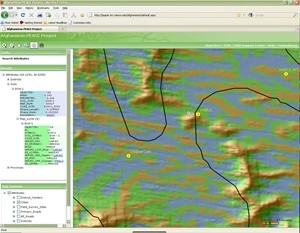
A new soils website gives site-specific soils data for planning, development, management, training, and research purposes.
Texas A&M University PEACE Project
USAID builds capacity for Afghanistan to plan and implement development and research programs.
4 MAY 2010 | KABUL, AFGHANISTAN
The Government of the Islamic Republic of Afghanistan and the country’s private sector have been struggling for decades to improve the livelihoods of the Afghan people. The lack of quality information on soils and other agriculture indicators has been a major constraint on development.
In September 2009, USAID’s PEACE project, implemented by Texas A&M University and the University of California, Davis, launched a new web-based tool that provides accurate small-scale soil information for planning and implementing development activities. The tool is available at http://jasper.brc.tamus.edu/afghanistan/default.aspx.
This tool will greatly improve site-selection and design opportunities for construction, community and agricultural development, and mitigation and rehabilitation purposes. The Afghan Government can use the site for training, as well as for educational and research purposes, and the tool will greatly facilitate strategic national planning efforts.
The last soils information for Afghanistan was published in 2005. The data have limited utility because they are not associated with databases and are at a very coarse scale, and most institutions and organizations lack the technical expertise to interpret the soil descriptions. The new web-based soils data are mapped at a 1:1,000,000 scale and include a digital elevation model overlay. This refinement allows the data to be broken down into finer-scaled soil classifications than those previously published.
For the first time, users can obtain current, site-specific, and detailed soils descriptions and taxonomy for anywhere in Afghanistan from anywhere in the world. The software is very interactive, allowing users to zoom in on a site and download the data with very little effort. The new tool has the potential to increase the efficiency and effectiveness of development efforts in a number of Afghanistan’s economic sectors and improve other USAID investments.







Comment
Make a general inquiry or suggest an improvement.